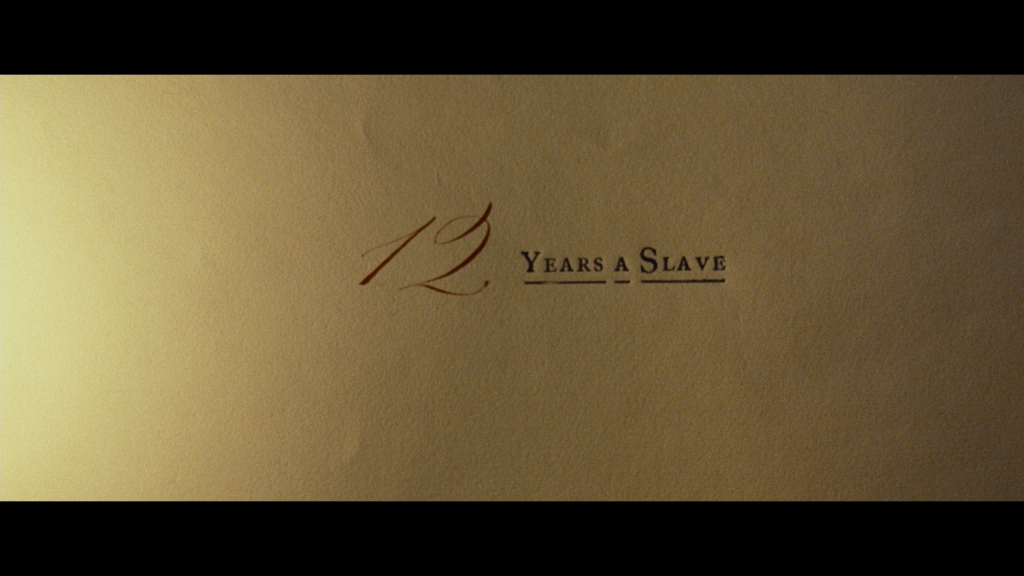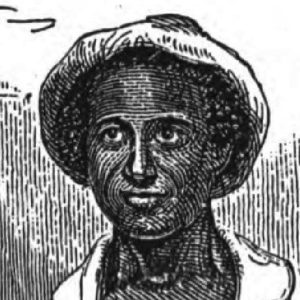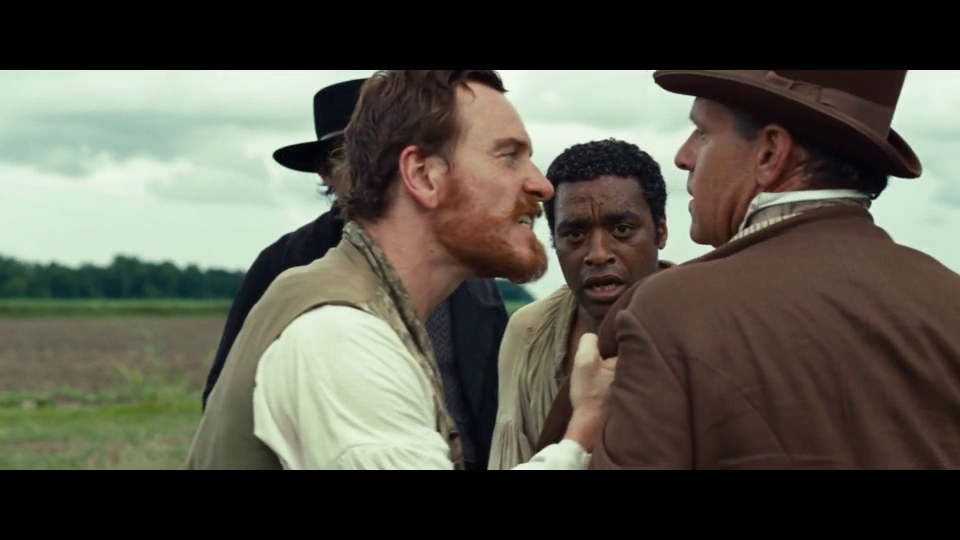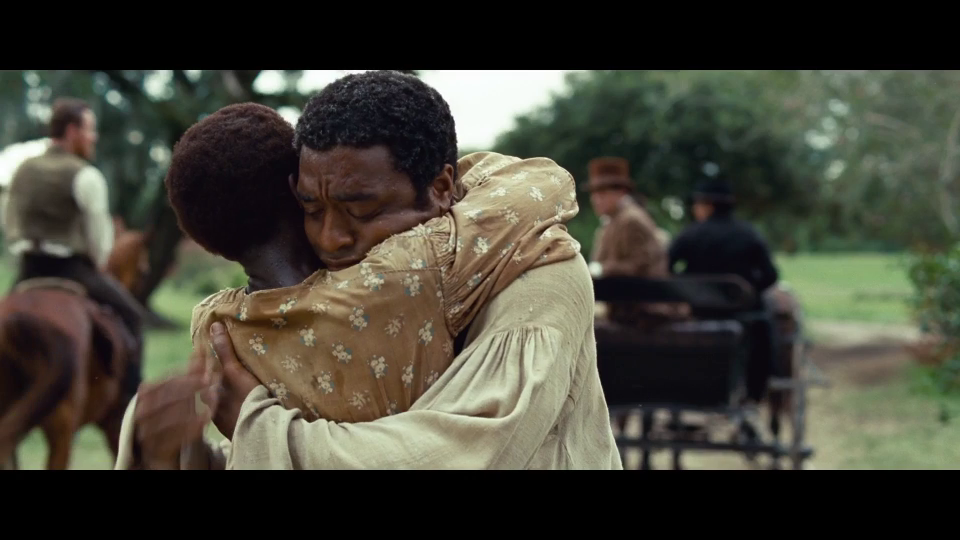12 Years a Slave is based on the 1853 memoir of Solomon Northup, a free black man from Saratoga, New York who was kidnapped and then spent twelve years in the South as a slave in Bayou Bouef, Louisiana. Northup’s memoir is framed entirely from his own first-person narration, supplemented by accounts of facts he gathered after gaining his freedom. Upon its initial publication, his story came as enlightening to a society on the brink of a Civil War over slavery, but it fell out of print and favor until nearly a century later, when it was resurrected by historians Sue Eakin and Joseph Logsdon with historical annotations.

Director Steve McQueen and screenwriter John Ridley’s film of the same name provides an emotionally effective and technically proficient means of retelling the slave narrative. The film was lauded with critical and commercial acclaim, culminating with a Best Picture win at the Academy Awards. While Northup’s first-person account of his years as a slave makes for an unusual slave narrative (few slaves earned the freedom or possessed the opportunity to tell their stories as Northup did), McQueen and Ridley designed a less subjective style for their film. They also had to make astute decisions on how to craft scenes that transferred cardinal functions, or major plot hubs, to the screen. One scene in particular–when North gains his ultimate freedom–accomplishes a dual purpose, adapting the memoir faithfully and efficiently but doing so with cinematic language that emphasizes the protagonist’s relief and disbelief.

An illustration of Solomon Northup from his memoirs
In Chapter 21 of Northup’s memoir is where the climax of Solomon’s story occurs, as two men approach him in the cotton fields at the estate of Edwin Epps. Preceding this visit, Solomon had confessed his story to a white Canadian carpenter Samuel Bass, who agreed to send a letter back home to those interested in his whereabouts. One man approaches him and asks “Do you know this man?” Solomon stares and contemplates for a moment, and exclaims “Henry B. Northup! Thank God –Thank God!” The sheriff quizzes Solomon about his life and his real name (Platt is his slave name), and Henry Northup confirms all the details as well. The surrounding slaves watch in astonishment, as Solomon leaves with the two men from the fields. Edwin Epps accompanies the men into the house, astonished at the new developments. Edwin Epps then inquires about a man who sent a letter for Solomon, his anger growing at the one who had cost him one of his slaves.
After some goodbye exchanges with Mistress Epps, Aunt Phebe, and Patsey, a disgruntled Edwin Epps mutters to Solomon: “Ah! you dead nigger, you needn’t feel so cussed tickled, you ain’t gone yet, I’ll see about this business at Marksville tomorrow.” Solomon departs the plantation he was captive of for ten years. In this important moment of his nightmarish journey back to freedom, Solomon captures the emotional resonance of breakthrough he has dreamed of for years, and can’t believe has finally come. A sense of relief and serenity washes over him. This scene is the culmination of hope and resilience held within Solomon’s heart during his 12 years as a slave.
In Steve McQueen’s 2013 adaptation, the same scene occurs at the two-hour mark of the film, fifteen minutes before the end. Solomon (Chiwetel Ejifor) is working in a planting field on a hot summer day, as a carriage arrives at the Epps estate.

Solomon identifies Parker from his past, as Edwin Epps comes into frame in the background
The man from the carriage approaches and asks for the slave known as “Platt” to come forward. He points to a man near the carriage and asks Platt if he knows him. Solomon squints his eyes and identifies Parker (Rod Steinberg), the man to whom he has written his letter back home. Edwin Epps (Michael Fasssbender) appears from the house in the background, demanding to know what is going on. Seeing the two men embrace, he interjects with aggressive language and physicality, not willing to part with his “property” without a fight.

Solomon is framed between the Epps and Parker, as they argue for his life
McQueen establishes this scene as the payoff and catharsis for Solomon and the audience alike, as Northup’s true identity is finally confirmed by a familiar face and–despite the angry raves of his despicable former master–he can finally escape him. By stopping for a brief goodbye embrace between Solomon and Patsey (Lupita N’yongo), McQueen allows for emotional resonance and gratification between the two characters as they share a bittersweet farewell.

Solomon bids farewell to Patsey as he leaves the Epps Estate
Michael Fassbender’s performance emphasizes Epps’ viallainy, and the tightly edited sequence of shots results in a moving four-minute climax to the film. A moving score from Hans Zimmer highlights the emotional impact of the scene, and Sean Bobbit’s cinematography focuses in on the contrasting reactions of Northup and Epps.

Shallow focus highlights the emotion of the moment as the background fade
McQueen and John Ridley opt to have Parker, the receiver of Solomon’s letter, personally travel to Louisiana to attest to his freedom, rather than Henry Northup of the book. They also interject Edwin Epps into the extraction for dramatic purposes, driving home both the book and films depiction of him as an angry man who see’s his black slaves as animals who are beneath white men. They disregard the visit inside the house with Solomon giving goodbyes, instead keeping a touching moment as he and Patsey hug and share a moment before he leaves. The power and menace of Edwin Epps is finally neutralized. Following the injustices and atrocities endured by Solomon, his family, his friends, this scene acts as appropriate relief and jubilation for a free man.
Here and elsewhere, McQueen chooses not to adapt every cardinal functions with complete fidelity, opting instead to focus more on those narrative events that work on a more purely cinematic level. Those changes notwithstanding, his 12 Years a Slave continues to make Solomon Northup’s story reverberate in the 21st century, using history to instruct, inform, and engage.

Trackbacks/Pingbacks